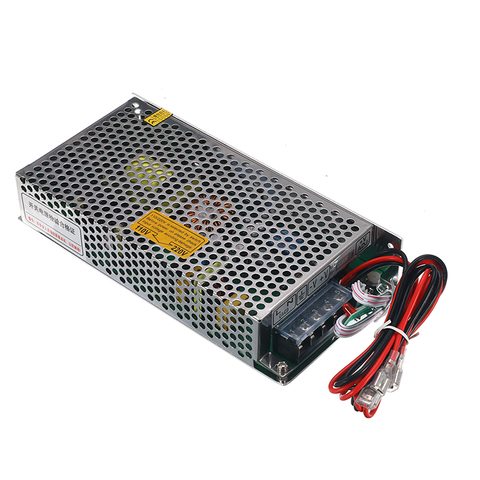180W 12V 13.5A Universal AC UPS/Charge Function Monitor Switching Power Supply Input 110/220V Battery Charger Output 12VDC
Price history
- for 3 month
- for half a year
- Requires Alitools extension
Price drop notification
This item is from other sellers
Similar Products
Customer Reviews
It's possible to regulate power supply output voltage (not really needed). But unfortunately charging voltage can't be regulated - it's fixed and is way too high - ~15.14V! For Lead Acid batteries working in stand-by/buffer mode - max charge voltage shall be between 13.5-13.8V (@20*C), for higher Temperatures it shall be even lower! Thus using this power supply without lowering the charge voltage will cause battery to be destroyed within few weeks (due to extensive overcharge/gassing). I spend few hours to reverse-engineer charging circuit and found out that it is based on simple LM317 voltage regulator chip. By replacing R52 resistor from 47kOhm to 14-15kOhm it's possible to change max charging voltage to 13.65V. But it shall be done already in factory! To test Max. charging voltage (to find exact resistor value) connect battery for a short time while operating power supply and disconnect it again. After that You may measure max. output voltage. Good Luck!
It's possible to regulate power supply output voltage (not really needed). But unfortunately charging voltage can't be regulated - it's fixed and is way too high - ~15.14V! For Lead Acid batteries working in stand-by/buffer mode - max charge voltage shall be between 13.5-13.8V (@20*C), for higher Temperatures it shall be even lower! Thus using this power supply without lowering the charge voltage will cause battery to be destroyed within few weeks (due to extensive overcharge/gassing). I spend few hours to reverse-engineer charging circuit and found out that it is based on simple LM317 voltage regulator chip. By replacing R52 resistor from 47kOhm to 14-15kOhm it's possible to change max charging voltage to 13.65V. But it shall be done already in factory! To test Max. charging voltage (to find exact resistor value) connect battery for a short time while operating power supply and disconnect it again. After that You may measure max. output voltage. Good Luck!















